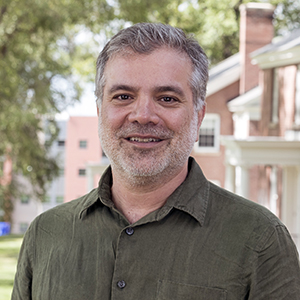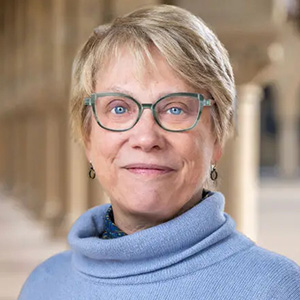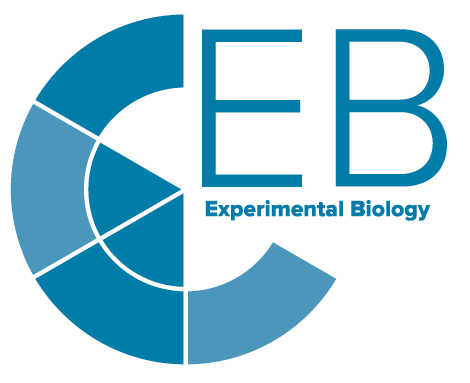Certificates of attendance
Download a certificate of attendance/presentation from the Registration Resource Center by entering your email address and badge number.
The 2022 ASBMB Annual Meeting, held in conjunction with Experimental Biology, will take place in person April 2–5 in Philadelphia.
Join thousands of scientists from multiple disciplines with shared research interests. Present your latest findings, hear inspiring lectures, participate in workshops, and form new bonds that will help you achieve the most important work of your career.
Experience four days of immersive and insightful exchange among life scientists from around the world.
About EB
The Experimental Biology conference — hosted by five scientific societies supporting studies in biochemistry and molecular biology, anatomy, pharmacology, physiology and pathology — attracts thousands of researchers and exhibitors.
Starting in 2023, the five societies will be parting ways. So don’t miss this last chance to converse and forge collaborations with scientists from multiple disciplines with shared research interests.
Program planning committee co-chairs
Once you return to normal lab life, how can you make use of everything you learned?
Scholar, scientist, teacher and mentor Odutayo Odunuga discusses the important roles of the institutional PI, his journey and his research.
Undergraduates in Houston catalog Texas mosquitos that carry known and novel viruses.
Program schedule
All sessions and events will take place at the Pennsylvania Convention Center unless otherwise noted.
Saturday agenda
Research Education Interest Group — Connecting the community for the benefit of student outcomes
Organizers: Ellis Bell, University of San Diego, and Regina Stevens–Truss, Kalamazoo College
This session will present recent research on the impact of collaboration between students and institutions in course-based undergraduate research experiences. Attendees will have the opportunity to join a team of like-minded faculty to network and develop action items for future discussion and research. Attendees will be able to connect with colleagues.
Undergraduate Student Poster Competition
Open to selected candidates only.
- 10:30 – 11:00 a.m.
Orientation - 11:00 a.m. – 12:00 p.m.
Check-in and poster setup - 11:00 a.m. – 12:00 p.m.
Judges' orientation - 12:00 – 3:30 p.m.
Undergraduate Student Poster Competition - 3:30 – 4:00 p.m.
Poster removal
Lipids Interest Group — Novel insight into roles of lipids in signaling and human disease
Organizers: Michael Airola, Stony Brook University, and John Burke, University of Victoria
This session will inform participants about the most cutting-edge lipid research being performed. Most of the speakers will be postdocs and graduate students. The session will cover a wide range of biochemical, biophysical and cellular approaches to study lipid signaling, in line with the organizers' approach for their successful ASBMB Lipid Research Division Seminar Series. By keeping a broad range of topics, we hope to provide novel collaborative opportunities.
Chemical Biology Interest Group — Emerging chemical approaches to complex biology
Organizers: Minkui Luo, Memorial Sloan Kettering Cancer Center, and Jianmin Gao, Boston College
Chemical biology can be broadly defined as a research field relying on chemical tools to interrogate biology for discovery and perturbation. The ASBMB has the historical mission to advance the research of biochemistry and molecular biology through diverse approaches and platforms. Such a mission establishes a key common ground between the ASBMB and the chemical biology community given complementary strength and interest. The Chemical Biology Interest Group aims to better promote crosstalk between the two fields. Importantly, we will primarily dedicate speaking opportunities to emerging young investigators as well as people from historically marginalized groups. The talks will showcase the emerging technologies that chemical biologists are developing to tackle complex biological problems. Chemical biologists will benefit from the perspectives and questions raised by experts in biology. Biologists will mutually benefit by considering broad utilities of the chemical biology tools and methods.
Signaling Interest Group — New paradigms in hormonal regulation of cancer and development
Organizers: Marina Holz, New York Medical College, and Mythreye Karthikeyan, University of Alabama, Birmingham
This session will cover the role of hormones in cancer and parallel developmental programs with emphasis on new insights, paradigms and mechanisms, and future directions. Attendees will learn about new areas of investigation and consideration of emerging paradigms in hormonal signaling.
Join the hormonal regulation Signaling Interest Group Slack channel
Glycobiology Interest Group — Glycobiology at the cutting edge
Organizers: Nadine Samara, National Institute of Dental and Craniofacial Research, and Stacy Malaker, Yale University
The session will feature speakers from academia, industry, startups and funding agencies who perform high-risk/high-reward glycobiology research that will take the field forward. Attendees will learn about the future of glycobiology and appreciate its importance in biomedical research. Early-career glycoscientists will learn about the possible paths they can pursue.
Protein Interest Group — Membrane proteins
Organizers: Matthias Buck, Case Western University, and Fran Barrera, University of Tennessee
The goal of this interest group session is to build a community of researchers in the field of membrane proteins. The study of membrane proteins is living a golden era, as strides are being made toward understanding how these key proteins function. This event will highlight recent advances in a broad range of membrane proteins that are central players in key cellular processes.
Neuroscience Interest Group
Organizers: Jason Yi and Harrison Gabel, Washington University School of Medicine in St. Louis
This session will feature recent work in the field examining pathways and molecules that cause neurological dysfunction, with a particular emphasis on genetic neurodevelopmental disorders.
Enzymology Interest Group
Organizers: Juan Mendoza, University of Chicago, and Kayunta Johnson, University of Texas at Arlington
The interest group session will be have talks by new and mid-career investigators and networking opportunities. The research to be presented will be focused on the structure–function of enzymes essential to cellular function and cellular regulation and relevant to human health and disease. Techniques and cutting-edge research include X-ray crystallography, cryo-EM, NMR, enzyme kinetics, enzymology and protein engineering. Attendees will be exposed to a diverse panel of researchers performing cutting-edge science. Participants will gain insights into how some scientists use combined structure and engineering approaches to elucidate key enzymatic processes of cells. New investigators will leave with insight related to their careers and respective fields through a Q&A session related to research, diversity, inclusion and promotion.
Protein Interest Group — Post-translational modification: emerging topics and techniques
Organizers: Lauren Ball, Medical University of South Carolina, and Fangliang Zhang, University of Miami
The goal of this session is to provide a forum enabling interaction of scientists interested in the elucidating the impact of regulatory post-translational modifications on physiology, disease and drug response. Attendees will learn about discoveries relating to the role of PTMs in diseased or normal physiologies and have the opportunity to start new collaborative research.
Join the Post-translational Modification Interest Group Slack channel
Mitochondria Interest Group — Multifaceted mitochondria
Organizers: Laura Lackner, Northwestern University, and Oleh Khalimonchuk, University of Nebraska–Lincoln
The session seeks to promote cross-talk across the areas of basic mitochondrial biology and molecular mechanisms of disease and aging, and provide an opportunity for biomedical researchers to explore and discover potentially unrecognized mechanisms of disease. Holding an interest group session that focuses on the diverse aspects of mitochondria and pathways that underlie the pathophysiologic mechanisms of age-associated diseases will provide a forum to uniquely gather the international community of scientists in mitochondria, cell metabolism and aging research. The overarching goal is to organize an exciting and interactive interest group session, expand the array of participants and trigger new synergy among researchers in the mitochondria and age-associated disease fields. We also aim to provide an excellent training experience for young scientists and foster professional connections between junior and more established investigators.
Signaling Interest Group — Emerging mechanisms of cellular communication in physiology and disease
Organizers: Michelle Mendoza, University of Utah Huntsman Cancer Institute, and Robert Zoncu, University of California, Berkeley
This session will cover new mechanisms in intra- and intercellular communication that have been uncovered through quantitative and structural biology. Attendees will get a broad overview of new signaling questions and approaches.
Join the cellular communication Signaling Interest Group Slack channel
Undergraduate student workshop: Speed networking
Students will have the opportunity to network with professionals from various biochemistry and molecular biology career fields.
Tang Lecture
EB opening reception
Sunday agenda
ASBMB member and first-time attendee orientation
ASBMB welcome and business meeting
Herbert Tabor Research Award lecture
Enzyme structure and function
Structure/function and manipulation and imaging of the glycocalyx
Macromolecular complexes
Machines on chromatin
Epigenetics and aging: can we turn back the clock?
Quality control in the early secretory pathway
Inclusive and civil communication
Chair: Erin Sayer, University of Nebraska–Lincoln
Atypical signaling mechanisms
Chair: Patrick Eyers, University of Liverpool
Metabolism and model systems
Organizing signaling domains through non-vesicular lipid transfer and membrane contacts
Chair: Orna Cohen-Fix, National Institute of Diabetes and Digestive and Kidney Diseases
Meet the experts
Advocacy Town Hall
Join the ASBMB Public Affairs Advisory Committee to hear about the intersection of policy and science. What policies has the Biden administration enacted to support the nation’s biomedical research enterprise? And how can federal agencies support researchers still struggling with the impacts of COVID-19 and related university and laboratory shutdowns. ASBMB Public Affairs Director Sarina Neote will be joined by the PAAC chair, Rick Page, who will field your questions on politics, science policy and getting involved in advocacy.
Meet the experts
Poster sessions
Accreditation program Q&A session
ASBMB–Merck Award lecture
William C. Rose Award lecture
Spotlight Sessions
Oral presentations selected from volunteer abstracts.
JBC Herbert Tabor Early Career Investigator Awards
Chair: George DeMartino, University of Texas Southwestern Medical Center
Walter A. Shaw Young Investigator Award in Lipid Research lecture and spotlight session
ASBMB Award for Exemplary Contributions to Education lecture and session
Enzymes in the spotlight
New links between glycoproteins, tissue development and disease
Emerging metabolic techniques and mechanisms
From molecular condensation to protein sorting
Membrane and membrane-free organelles and quality control
Atypical signaling
DNA/RNA regulation of nuclear processes
Lipids shaping membranes and creating signaling platforms
Spotlight Sessions
Oral presentations selected from volunteer abstracts.
Chromatin structure, remodeling and gene expression
RNA: processing, transport and regulatory mechanisms
Protein synthesis and interactions
Chemical biology and drug discovery in acute and chronic disease
New innovations in “omic” technology
GPCR signaling
Pathogen–host interactions
Structure of proteins involved in signaling and lipid metabolism
Innovative teaching strategies in the STEM classroom
Control of inflammation by dietary interventions
Organizer: Michael N. Sack, National Heart, Lung and Blood Institute
This workshop will explore how different dietary components and/or temporal dietary intake strategies play a role in modulating inflammation and disease pathophysiology. Explore how specific nutrients via diverse regulatory mechanisms — transcription, GPCR signaling, post-translational modification and metabolic signaling — alter immune cell responsiveness.
Attendees will learn about integration of environmental cues with intracellular regulatory pathways to drive immune cell responsiveness.
Target audience: Scientists focusing on cardiometabolic risk, nutrient signaling, inflammation and effects of dietary interventions on health.
Approaches to teaching in the biosciences using different course modalities
Organizer: Monica Rieth, Southern Illinois University, Edwardsville
Become familiar with new modes of instruction. Learn to work outside of your teaching comfort zone by incorporating new exercises and lessons that align with other teaching modalities.
The workshop will include ways to incorporate new teaching modalities into biochemistry education both in the classroom and in the lab using examples and evidence-based practices reported in the current literature. Exercises and sample lessons will be implemented to help attendees adapt new techniques to their current and future practices.
For example, a lesson on amino acids and protein structure may be taught in a lecture-style format and attendees would be asked to adapt this lesson to a flipped-style classroom or problem-based learning exercise. How would each person change the format/content using examples to illustrate these changes?
Attendees will also be asked to identify and/or anticipate any advantages or disadvantages to changing to a new teaching modality, such as increased/decreased student engagement. Open discussions will further introduce attendees to teaching practices as of yet unreported in the literature.
Attendees will develop a network of peers who can provide support to them.
Target audience: Instructors teaching undergraduate- or graduate-level biochemistry courses or labs both for majors and nonmajors. Those interested in exploring different teaching styles and modalities in their courses.
Increasing diversity through master's degree programs
Organizer: Bob Rose, North Carolina State University
Network with other faculty members contributing to programs for research-based master's degrees.
We developed a research-based master's program in biochemistry from an NSF S-STEM training grant to fund low-income students and increase diversity of associated departments. Our funding is ending, and we are looking for ideas for continued funding of the program and developing support in a Ph.D.-focused department.
Target audience: Graduate faculty involved with STEM education.
The power of storytelling
Storytelling is an essential component of communication. It can be used to connect with a diverse audience and make challenging subjects more accessible. Mastering storytelling requires creative flexibility, dexterity with language and willingness to get personal. Learn how to incorporate yourself as a scientist into your science story in a way that strengthens your message without sacrificing scientific integrity. This interactive session will lead participants through hands-on storytelling training that is based on one of the modules from the ASBMB course The Art of Science Communication.
Success in scientific publishing workshop
Will my data stand the test of time?
Is my writing clear, compelling and engaging?
Will I be able to reach an audience that will give my research its greatest impact?
These are questions authors ask themselves when preparing manuscripts for publication.
The American Society for Biochemistry and Molecular Biology is home to the Journal of Biological Chemistry, the Journal of Lipid Research, and Molecular & Cellular Proteomics. In this 90-minute workshop, members of the society’s publications staff will offer insights into the publication pipeline and provide you with tips on three essential topics: presenting data, writing well and sharing your work.
Presenting:
- Ken Farabaugh, Developmental Editor
- Stephanie Paxson, Journal Marketing Associate
Women scientists networking event — The evolution of work–life integration in the time of COVID-19
Integrating work and personal life is challenging and has been made even more so for women during the COVID-19 pandemic. The ASBMB Women in Biochemistry and Molecular Biology Committee is hosting its annual networking dinner and a panel discussion titled “The evolution of work–life Integration in the time of COVID-19.” Lea Vacca Michel of the Rochester Institute of Technology, winner of the society’s Early-Career Leadership Award, and Marlene Belfort of the University at Albany, winner of the Mid-Career Leadership Award, will be panelists.
They will be joined by members at various career levels to discuss their experiences with integrating work and their personal lives during the pandemic. Attendees are encouraged to weigh in during the discussion.
ASBMB welcome reception
Monday agenda
DeLano Award for Computational Biosciences lecture
Avanti Award in Lipids lecture
Frontiers in enzymology
Chair: Tadhg Begley, Texas A&M University
Glycans in cell biology
Phase transitions of structured complexes and cellular machinery
Noncoding RNA regulation of chromatin states and transcription
Epigenetic regulation of metabolism: from bench to bedside
Organelles and cellular homeostasis
Chair: Elizabeth Vierling, University of Massachusetts, Amherst
Strategies for assessment in higher education
New approaches for global cell signalling
Chair: Vincent Tagliabracci, University of Texas Southwestern Medical Center
Complex metabolic interactions
Novel approaches to understand membrane composition and structure
Chair: Lois Weisman, University of Michigan
Meet the experts
ASBMB career programming at EB Career Central
Bite-size sessions focused on developing key skills to support your career progression and exploring different career paths available to those with scientific training.
The art of the interview: Ask great questions, give great answers and enjoy the process
No matter where you are in your career, having great interview skills can help you make the next step. When it comes down to brass tacks, an interview is just a conversation. Laurel Oldach, a scientist-turned-science-writer at the ASBMB, will talk about both sides of interviewing: how you can make the most of informational interviews that you conduct and how you can feel more relaxed and prepared when you’re the interviewee.
Exploring careers in science publishing
Ever wonder what it is like to work behind the scenes to bring research to publication? Join members of the ASBMB publications staff to explore the variety of positions in publishing that benefit from scientific training. Speakers will share insights into the different roles, the day-to-day and how to make the leap from research to publishing.
Managing your mentoring relationships through mentoring up
Once you have found a mentor, what comes next in making the most of this relationship? Richard McGee of Northwestern University Feinberg School of Medicine will focus on the essential and critical elements of effective mentoring relationships, with an emphasis on mentoring up — how students and postdocs can use these principles to guide and help their mentors provide what they are seeking from them.
Science policy skills — helpful for scipol and beyond
Whether you are interested in science policy as a possible career or enjoy advocacy to support your science, there is a subset of skills necessary to make you an attractive job candidate or skilled advocate. But did you know that those same skills can help you be a better scientist too? Join ASBMB Public Affairs Director Sarina Neote and members of the society’s Public Affairs Advisory Committee to learn about how to improve those soft skills — and apply them no matter where your career takes you.
Meet the experts
Poster sessions
Building community through ASBMB Student Chapters
Earl and Thressa Stadtman Distinguished Scientist Award lecture
Mildred Cohn Award in Biological Chemistry lecture
Spotlight Sessions
Oral presentations selected from volunteer abstracts.
Exciting biological insights revealed by proteomics: A Molecular & Cellular Proteomics presentation
Chair: Pierre Thibault, Institute for Research in Immunology and Cancer
The Alice and C.C. Wang Award in Molecular Parasitology symposium
DNA polymerases, telomerase, replicases and replisomes
Protein modifications
Allostery and enzyme function
Chemical biology
Cancer signaling and therapeutics
Antibacterial targets and antibiotic resistance
Mitochondrial metabolism
Lipid homeostasis
Teaching strategies and lessons learned during COVID-19
Spotlight Sessions
Oral presentations selected from volunteer abstracts.
DNA recombination, structure and topology
Epigenetic modifications of DNA and RNA
RNA binding proteins
Chemical biology and drug discovery in infectious disease
Ubiquitin signaling
Apopotosis
Cancer metabolism
Membrane traffick and dynamics
Lipid metabolism functions
RNA export at the nuclear pore complex
Organizer: Mary Dasso, Eunice Kennedy Shriver National Institute of Child Health and Human Development
RNA export is a complicated and critical stage of gene expression, which remains poorly understood. It involves components of both the RNA processing and nuclear trafficking machinery. This workshop seeks to bring together different emerging approaches and model systems that are being applied to untangle the sequence and logic of RNA processing and export events.
The focus of this workshop will be on nuclear pore proteins as guardians of mRNA export and their role in the selectivity of RNA export in health and disease. The workshop will bring together laboratories using cryo-EM, X-ray crystallography, biochemistry, nuclear microinjection, genetics, cell biology, CRISPR/Cas9-AID gene editing, live imaging, viral and animal models to elucidate interactions between nucleoporins, mRNA and RNA-accessory proteins at the nuclear pore complex.
Attendees will learn about cutting-edge tools and techniques and their application to the process of mRNA export. They will learn up-to-date progress, explore unresolved questions in the field and meet world-class experts.
Target audience: This workshop will appeal to a diverse group of scientists (students, postdoctoral researchers and group leaders) who are interested in RNA processing and export, the regulation of gene expression, nuclear trafficking and nucleoporins.
Pedagogical lessons learned during the time of COVID-19
Organizer: Phillip Ortiz, State University of New York
This workshop will include a presentation of and discussions about pedagogical approaches used during the shift to teaching at a distance during the COVID-induced closing of some campuses. As we often learn more from failure than success, this workshop will include approaches that worked and that didn't.
Attendees will hear about creative and innovative approaches to teaching and learning. In addition, as it has been noted by people who were successful at shifting some or all of their teaching to different modalities that some content is better taught by those modalities (which leaves time in their courses to expand the content that requires face-to-face instruction), the workshop may lead to productive conversations about educational innovation.
Target audience: Primarily BMB educators, but also all educators at the undergraduate and graduate levels, including new and established faculty members at all types of colleges and universities, teaching assistants and postdoctoral researchers who are interested in careers at primarily undergraduate institutions. Undergraduate and graduate students also are welcome attend so that they may share their insights and experiences during the Q&A and open discussion portions of the session.
Becoming the boss of your career
Organizer: Erica Gobrogge, Van Andel Institute
Establishing career goals, navigating challenging conversations associated with those goals, and working outside the laboratory to advance your career can be challenging for scientists at all career stages. In addition, these conversations can be particularly difficult for international scientists, whose cultural norms may be different than those commonly found in the U.S.
Participants will develop their own goals, draft plans for achieving them and practice navigating conversations they might encounter while advocating for those goals. The mission of this workshop is to encourage, support and empower scientists to take charge of their careers.
Target audience: This workshop primarily will be of interest to undergraduate students, graduate students and postdoctoral researchers, but scientists at career stages are welcome.
Transforming scientific research into equitable outreach
How do you transform your passion for science into equitable outreach? This interactive session will cover the importance of science outreach and its impacts on enhancing diversity, equity and inclusion within the biomedical science research workforce. Chelsey Spriggs, co-founder of Black in Microbiology (#BlackInMicro) and a member of the first cohort of the ASBMB MOSAIC program, will share her journey as a role model for underrepresented students interested in biological research. She will describe how she has engaged in outreach and mentorship and how, through her work as a board member of the Black in Microbiologists Association, she aims to enhance the visibility of Black scientists in the field. Be ready to have a thoughtful discussion with your peers and brainstorm ways to use science outreach as a vehicle to equity and inclusion.
Tuesday agenda
Ruth Kirschstein Diversity in Science Award lecture
Bert and Natalie Vallee Award in Biomedical Science lecture
Radical SAM enzymology
Chair: Tadhg Begley, Texas A&M University
Physiological impact of glycans in tissue homeostasis and disease – focus on cell-ECM interactions
Physiological and pathological phase transitions of disordered proteins
New approaches to visualize nucleic acids
Translational epigenetics: The apple doesn’t fall too far from the tree
Organizing the cytoplasm during stress
Bringing the dead to life: pseudoenzymes
Chair: Anne-Claude Gingras, Lunenfeld–Tanenbaum Research Institute
Metabolic mechanisms
Membrane dynamics in trafficking and signaling
Chair: Tamas Balla
Meet the experts
Meet the experts
Poster sessions
ASBMB Young Investigator Award lecture
Thermodynamics in the everyday life of biologists
Organizer: Assen Marintchev, Boston University School of Medicine
This workshop will introduce the concepts of thermodynamic coupling and binding kinetics in the context of biochemical experiments, with emphasis on practical applications and common mistakes.
Learn how to properly plan, perform and analyze binding experiments and avoid everyday errors:
- How to use thermodynamic coupling to indirectly calculate a binding KD from the KD's of coupled interactions, if direct determination is impossible or difficult.
- How to compare binding constants to determine whether they are mutually consistent.
- How to determine whether and when two or more molecules bind to each other in vivo.
- How to quantitatively evaluate experimental binding constants: what they mean for the underlying biological process and whether they are physically possible.
Target audience: Ph.D. students, postdocs and faculty members.
Lipid diversity and disease: Spotlight on Journal of Lipid Research Junior Associate Editors
Chair: George Carman, Rutgers University
Spotlight Sessions
Oral presentations selected from volunteer abstracts.
Race and mental health in STEM
STEM graduate students and postdoctoral fellows, particularly those of color, often experience microaggressions, discrimination and harassment in the workplace, which can lead to adverse mental health outcomes. We must support these scientists by encouraging dialogue and taking action. In this session, sponsored by the ASBMB’s Maximizing Opportunities for Scientific and Academic Independent Careers program, or MOSAIC, panelists Cirleen DeBlaere of Georgia State University, Carlota Ocampo of Trinity Washington University and Stephen Quaye of Ohio State University will lead insightful discussions pertaining to the intersectionality of race and mental health of STEM trainees.
Gene regulation
Non-coding RNAs
Metal mania
Drug screening
Novel kinase regulatory mechanisms
Neurobiology and neuronal signaling
Nutrition and metabolism
Membrane architecture
Recent advances in glycobiology
Spotlight Sessions
Oral presentations selected from volunteer abstracts.







